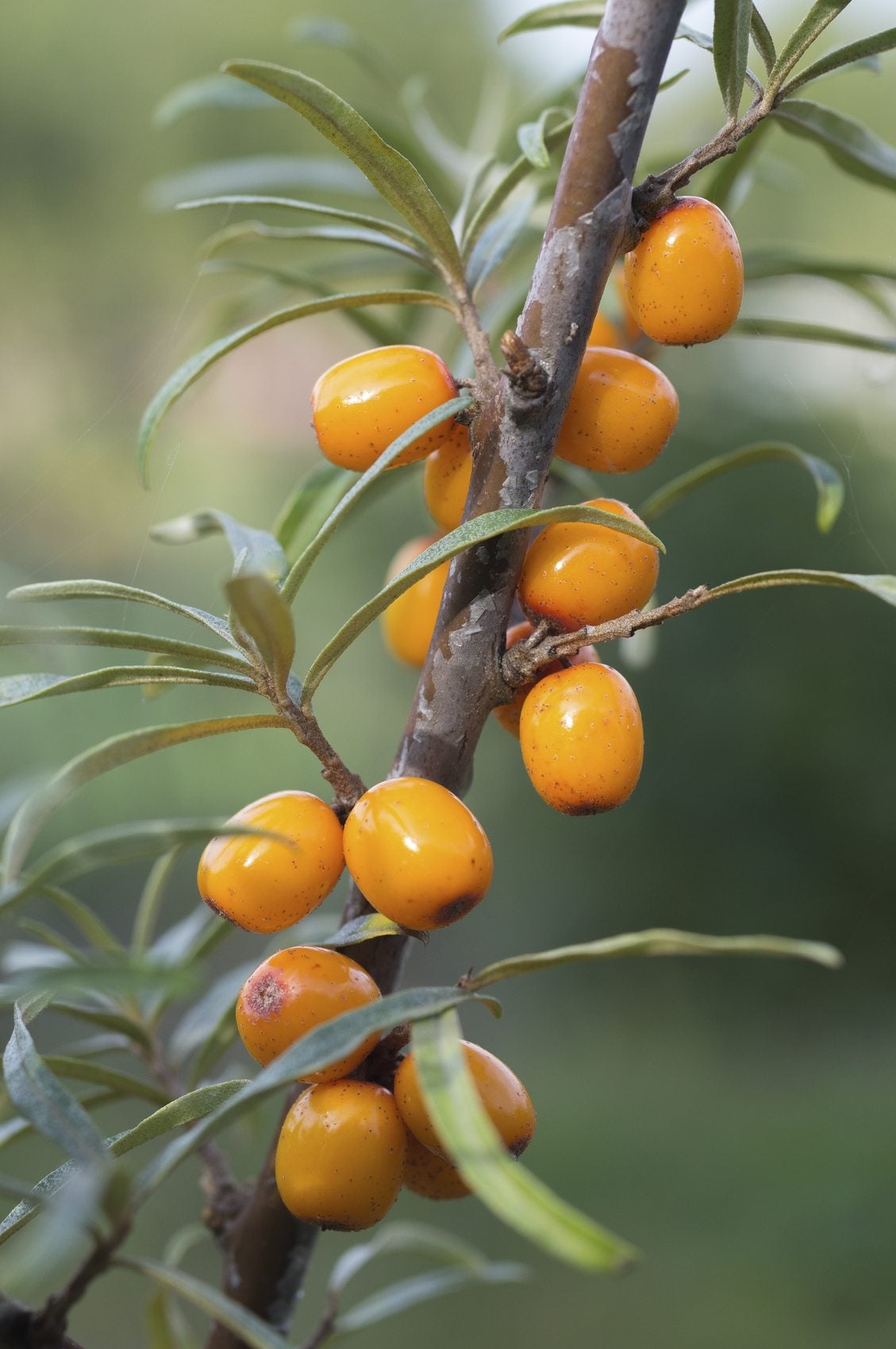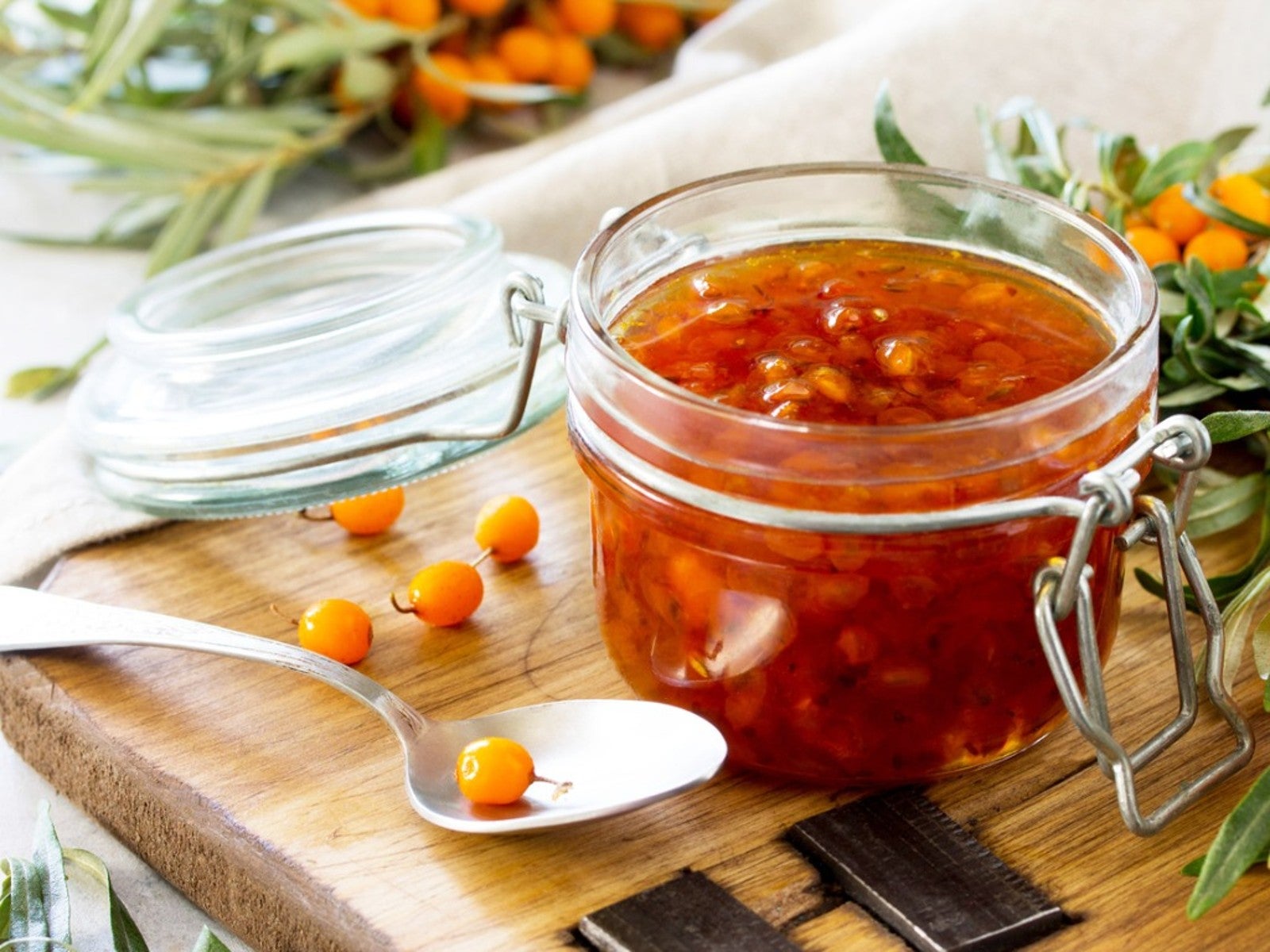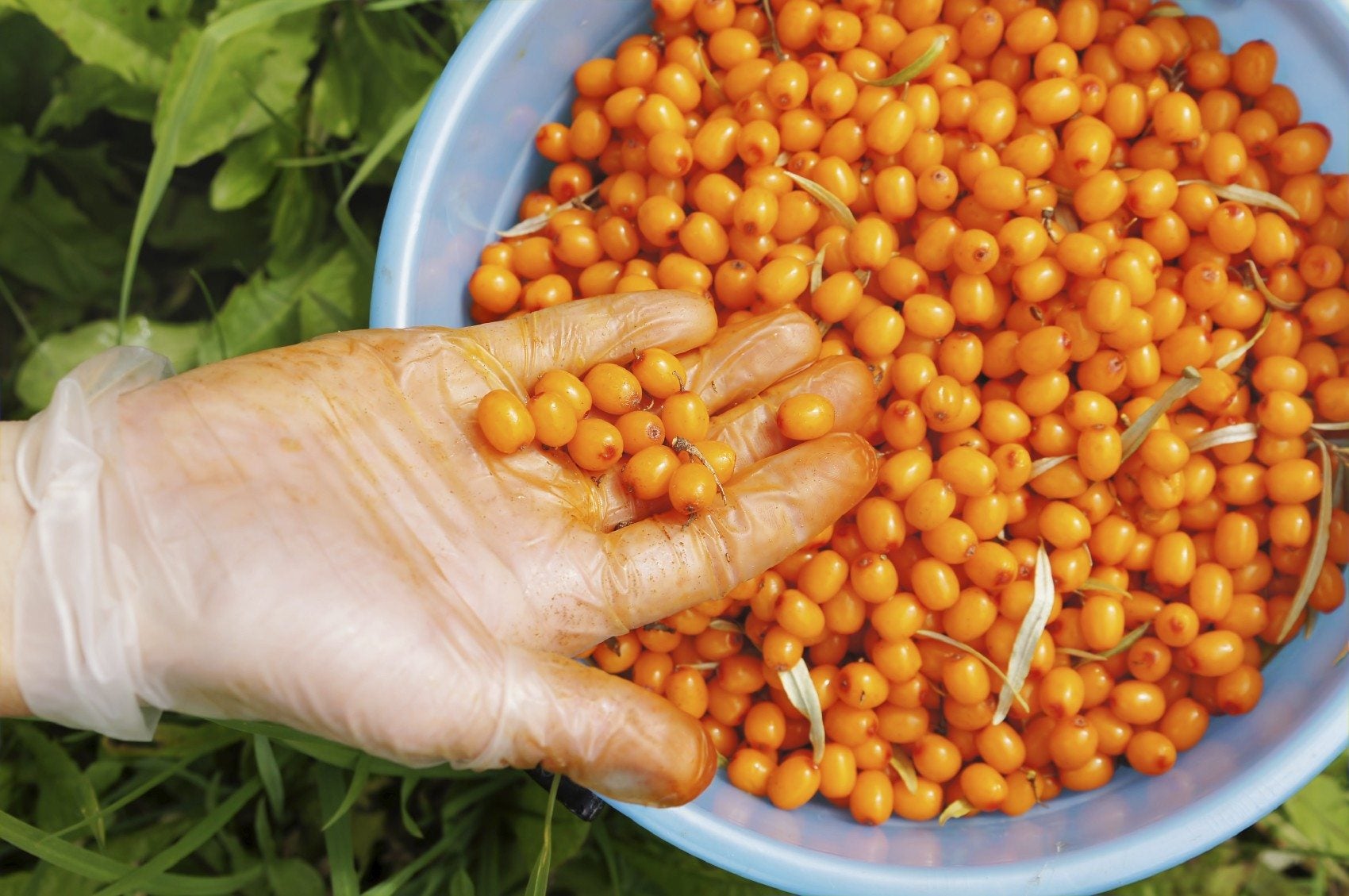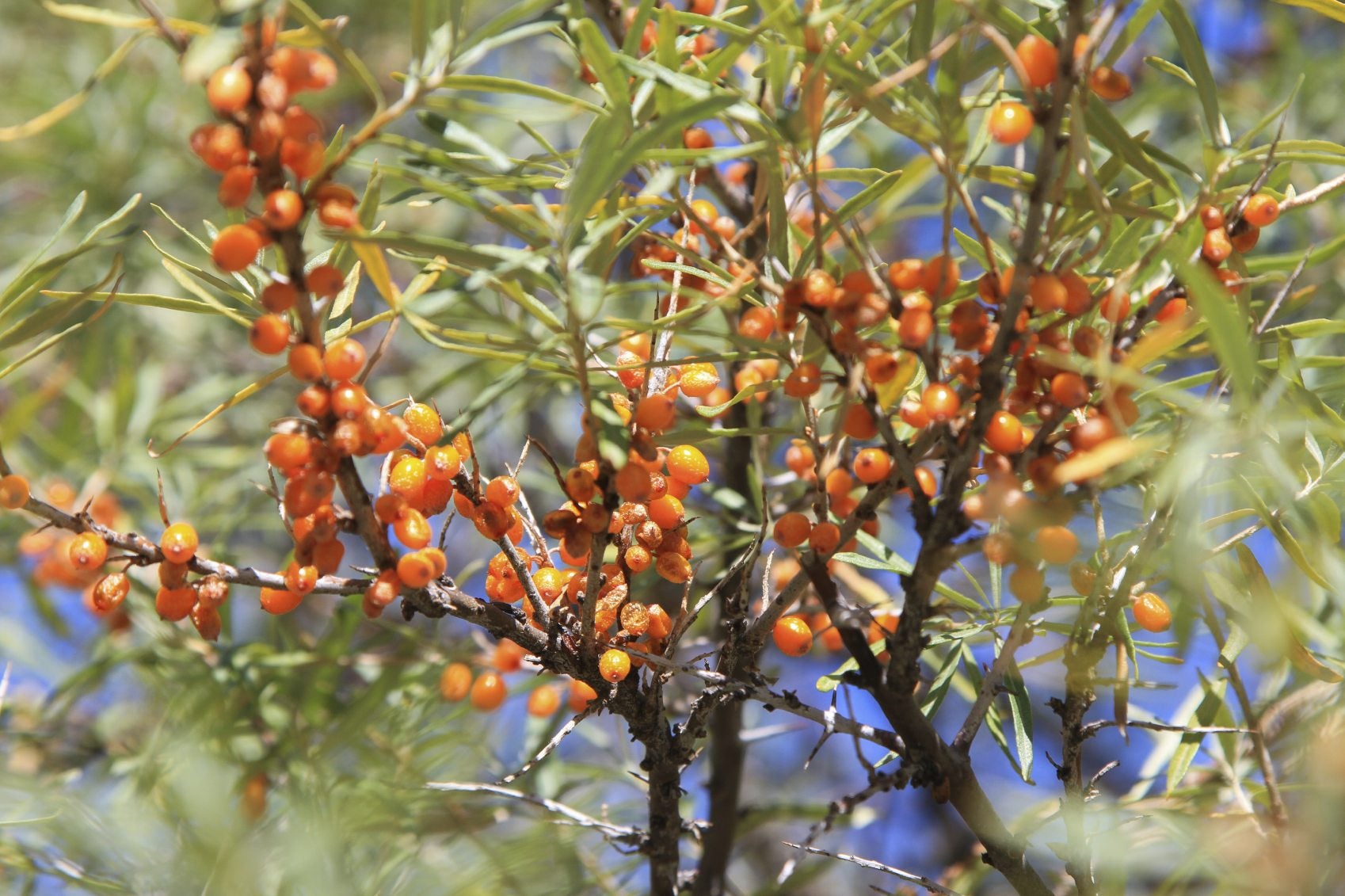Potted Seaberry Care – Tips For Growing Seaberries In Containers


Seaberry, also called sea buckthorn, is a fruiting tree native to Eurasia that produces bright orange fruit that tastes something like an orange. The fruit is most commonly harvested for its juice, which is tasty and very rich in nutrients. How does it fare in containers though? Keep reading to learn more about container grown seaberry plants and potted seaberry care.
Growing Seaberries in Containers
Can I grow seaberries in pots? That’s a good question, and one that doesn’t have an easy answer. The temptation to grow seaberries in containers is clear-- the plants multiply by suckers shot up from huge root systems. The tree aboveground can get very large as well. If you don’t want your garden to be overrun, container grown seaberry plants make a lot of sense. However, the very fact that they spread out makes keeping sea buckthorn in pots something of a problem. Some people do have success with it, so if you’re interested in growing seaberries in containers, the best thing to do is give it a shot and do everything you can to keep the plants happy.
Potted Seaberry Care
Just like the name suggests, seaberry trees do well in coastal areas where the air is salty and windy. They prefer dry, well drained, sandy soil and don’t need any fertilizer beyond some additional compost each spring. The trees are hardy in USDA zones 3 through 7. They can reach up to 20 feet (6 m.) in height and have a very wide root spread. The issue of height can be solved by pruning, although too much pruning in the fall can affect the following season’s berry production. Even in a very large container (which is recommended), your tree’s roots might be confined enough to keep the aboveground growth small and manageable, too. This may, however, also affect berry production.
Gardening tips, videos, info and more delivered right to your inbox!
Sign up for the Gardening Know How newsletter today and receive a free copy of our e-book "How to Grow Delicious Tomatoes".

The only child of a horticulturist and an English teacher, Liz Baessler was destined to become a gardening editor. She has been with Gardening Know how since 2015, and a Senior Editor since 2020. She holds a BA in English from Brandeis University and an MA in English from the University of Geneva, Switzerland. After years of gardening in containers and community garden plots, she finally has a backyard of her own, which she is systematically filling with vegetables and flowers.
-
 Looking For Plants To Give You The Soft And Fuzzies? Try These 5 Fuzzy Leaf Plant Options
Looking For Plants To Give You The Soft And Fuzzies? Try These 5 Fuzzy Leaf Plant OptionsLovers of texture, drama, silver foliage and tactile plants will adore these special sensory garden additions. These fuzzy leaf plant options will leave you all aglow
By Susan Albert
-
 Get Ready For A Summer Of Hummers! Grow These Full Sun Hummingbird Plants and Flowers
Get Ready For A Summer Of Hummers! Grow These Full Sun Hummingbird Plants and FlowersIf you’re lucky enough to enjoy a sunny backyard, make sure you are maxing out on your pollinator opportunities and grow these full sun hummingbird plants and flowers
By Tonya Barnett
-
 Turn Sea Buckthorn Berries Into Tasty Jam
Turn Sea Buckthorn Berries Into Tasty JamRead about how sea buckthorn berries make a surprisingly healthy and tasty jelly.
By Bonnie L. Grant
-
 Uses For Seaberries: Tips On Harvesting Sea Buckthorn Berries
Uses For Seaberries: Tips On Harvesting Sea Buckthorn BerriesUnfortunately, the thorns make buckthorn harvesting difficult. Still, buckthorn harvesting is well worth the effort. Click this article to find out about harvesting sea buckthorn berries, when seaberries are ripe, and uses for seaberries.
By Amy Grant
-
 Sea Buckthorn Plant – Information On Planting Sea Buckthorn Trees
Sea Buckthorn Plant – Information On Planting Sea Buckthorn TreesAlso called Seaberry plants, Buckthorn has many species, but they all bear common characteristics. For more Sea Buckthorn information, this article will help. Then you can decide if this plant is right for you.
By Bonnie L. Grant